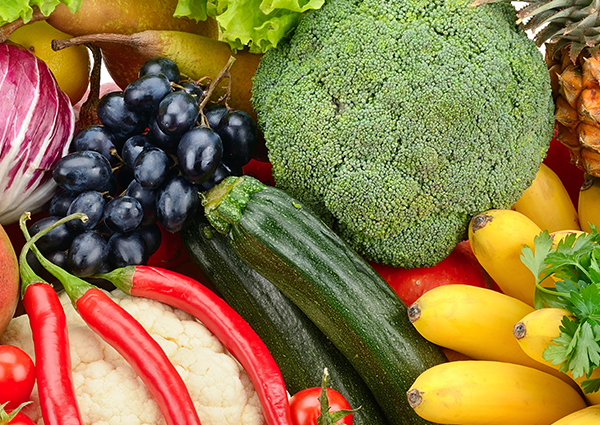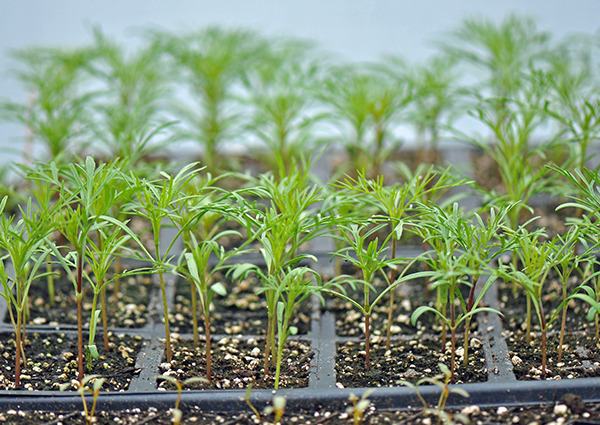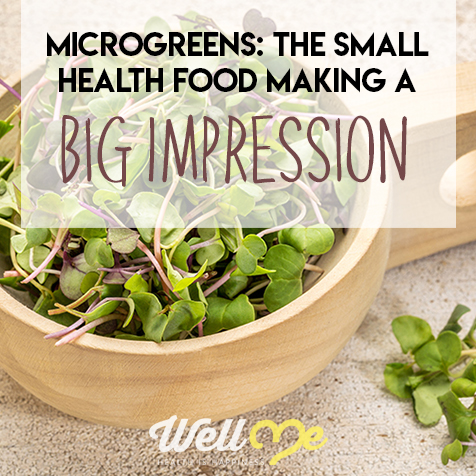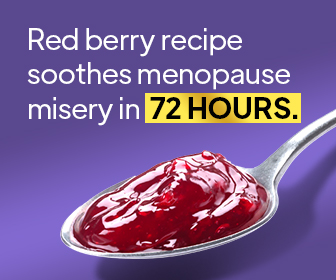You already know the benefits of leafy green vegetables like kale and spinach, but you probably eat these vegetables in their mature form. What you may not realize is that harvesting these and other vegetables while they are still young creates a completely different nutrient profile. This is the beauty of microgreens.
Microgreens are simply young vegetable greens, typically used for culinary purposes. They have recently become popular as a health trend in restaurants as a garnish and for providing short but intense bursts of flavor. What many people don’t know is that harvesting these greens while they are still young can provide a unique array of health benefits.
Microgreens can be found in many varieties as they are just the young versions of common vegetables such as cabbage and radish. In this article, you’ll walk through the tiny world of microgreens to learn about the health benefits they can provide. You’ll also learn how to grow them yourself!
What are the Benefits of Microgreens?

When you think about leafy greens and other vegetables, you probably picture a bunch of large spinach leaves or maybe a full bundle of kale. Microgreens are much smaller because they are harvested in the early stages of growth.
Not only do microgreens look attractive when used as a garnish, but they can also provide a unique burst of flavor. More importantly, however, they are loaded with health benefits! Keep reading to find out what they are.
Vitamins and Minerals
The most important benefits of fruits and vegetables come from the nutrient content of these fantastic plant-based foods. Microgreens are even better than their mature counterparts – much like eggs contain a better nutrient profile than chicken breast, microgreens are more nutrient-dense than most adult vegetables.
Vitamin A: Skin, Hair, and Nail Health

Carotenoids are the pigments that give fruit and vegetables a red-orange color. Examples include carrots, sweet potatoes, and tomatoes. These pigments are also essential for human health because your body uses them to maintain hair, skin, and nail health.
Microgreens contain huge quantities of vitamin A, which (along with vitamin D) is linked to improved immune function by improving immune processes and protecting the skin – the first barrier against chemical threats to the body. Some contain as much as 500% of the vitamin A we find in their full-grown form.
Vitamin C: Protect Brain Function and Blood Health
Vitamin C is not just found in oranges – microgreens contain concentrated, bioavailable forms of vitamin C. For example, red cabbage microgreens contain considerably more of these health-promoting compounds than their mature counterparts. This essential vitamin supports the production of neurotransmitter and hormones, making it an important part of any diet. Microgreens provide a great source of vitamin C for your body without the acidity or sugar of more common sources like oranges.
Vitamin E: Protect Yourself from Chronic Disease

Vitamin E is a powerful antioxidant called tocopherol, and one of the most powerful antioxidant compounds available in food sources. Antioxidants protect the DNA in cells from free radicals – the waste products your body creates during metabolic processes. Microgreens provide a fantastic boost of vitamin E, giving your body a powerful immune boost to protect against chronic diseases such as cancer and organ failure. Microgreens contain up to 10 times as much vitamin E than even the most nutrient-dense adult vegetables.
Vitamin K: Blood, Bones, and Heart Health
Vitamin K doesn’t get much attention but it is an incredibly important part of the blood coagulation process. It also plays a role in blood health and wound healing. This vitamin is a key chemical in photosynthesis, so it’s no surprise that we find large quantities in microgreen saplings. If you’ve ever been told to eat your greens, vitamin K, adding more microgreens toyour diet will mean better protection against osteoporosis, cardiovascular disease, and cancer.
Phytonutrients
Phytonutrients are simply plant-based nutrients that are not found in any other food sources. The science on phytonutrients is still in the early stages, but research already suggests that they can improve a wide variety of health benefits for everything from cardiovascular health to metabolic function. We’ve included a brief list so you can get an idea of just how varied the benefits of phytonutrient intake can be:
- Powerful antioxidants
- Gut health
- Enzyme support
- Improves blood cholesterol
- Reduce cancer risk (especially stomach, liver, colon, and prostate cancer)
- Anti-mutagenic
- Improve skin and hair health
- Regulate hormones
- Anti-inflammatory
- Eye health
This list covers a small number of the benefits you could gain from increasing your phytonutrient intake – this alone should be enough to convince you to eat more microgreens!
Microgreens container greater concentrations of phytonutrients than some of the healthiest foods like bok choy or even tomatoes. Because they are in the early stages of development, they are packed with high-quality nutrients. Including a wide variety of fruit and vegetables in your diet is essential for balance, and microgreens can help.
Microgreens Are High in Fiber

The dietary importance of fiber is undeniable, and microgreens are an excellent source of this metabolism-regulating wonder-food. Fiber combats the risks and symptoms of diabetes while improving digestive regularity and boosting your chances of losing weight. Fiber refers to the non-digestible carbohydrates found in plants. These fibers react with water in the digestive system to keep you full and to combat blood sugar spikes.
Microgreens may contain more than 10g of fiber in every 100 to 120g serving, making them an excellent source of both nutrients and fiber. The mixture of nutrients and fiber is one of the ways we classify a food as ‘healthy’ and all the research suggests that microgreens are some of the healthiest foods you could possibly put in your body.
High Protein Content
Microgreens are uncharacteristically rich in protein compared to other plant foods. Most vegetables are high in fiber and micronutrients, but low in protein. Sunflower microgreens, on the other hand, contain around 20g per 100g serving, which makes them incredibly protein-dense. This is an amazing health benefit, especially for those who are on a plant-based diet. Adding these amazing tiny vegetables to your diet is an easy way to gain muscle, lose fat, and recover from exercise more quickly.
Cooking with Microgreens: Versatility and Taste
One of the most practical uses for microgreens is in cooking, particularly in restaurants. They can be used both as a garnish and as a vegetable in their own right. Their flavors range from gentle and aromatic to bold and distinctive (like mustard spinach). Their texture varies depending which plant you use. For example, kale microgreens are a world apart from red cabbage in flavor and texture.
Cooking with microgreens is easy because most of the time you don’t need to cook them at all! Microgreens can be eaten cold and fresh – simply wash them in cold water and they’re ready to use. Try adding them to salads, either chopped or whole, as a great way to improve the overall benefits of the meal. Alternatively, you can add them to almost any meal such as wraps, potatoes, eggs, sushi, or even pizza.

Summary: Growing Your Own Microgreens
By now you know that while fruits and vegetables are healthy in their mature form, some of them are even more nutrient-rich if harvested while they are very young.
The myriad health benefits of microgreens should be enough to convince you to include them in your diet and, if you really want to get serious, to start growing them yourself. Growing microgreens is incredibly easy – all you need are seeds, water, a breathable plastic container, and some high-quality soil! If you live anywhere with a reasonable amount of sun, you won’t need to buy a grow-light. If, however, you live in a darker climate then a cheap grow-light is enough to make sure that your microgreens germinate and grow.
To start out, we recommend choosing a simple, easy-to-grow seed such as cabbage, cauliflower, or sunflower. Start with a single container of microgreens and expand as you gain understanding of the process . It is possible to buy pre-mixed seeds for a variety of flavors and colors, but we recommend starting out with a single plant.
Actionable Steps: How to Grow Your Own Microgreens
- Take a small plastic container and pierce the bottom so the soil can drain. Fill the container with 2 inches of high-quality potting soil.
- Spread your seeds evenly over the soil, gently patting them down. Cover the seeds with a thin layer of soil (half an inch should be enough).
- Dampen the surface of the soil and place the container in an area that receives at least 4 hours of sunlight per day, or under a grow-light.
- Mist the soil a few times every day until the microgreens begin to sprout. You should be able to harvest them after 2 to 3 weeks, cutting at the base of the stem so they will keep growing.
Microgreens are loaded with health benefits, not to mention a unique flavour profile. If you want to include these foods in your diet, try growing them yourself at home!
Want to learn more about adding nutrient-rich foods to your diet? Check out our article on the top 5 superfoods.








